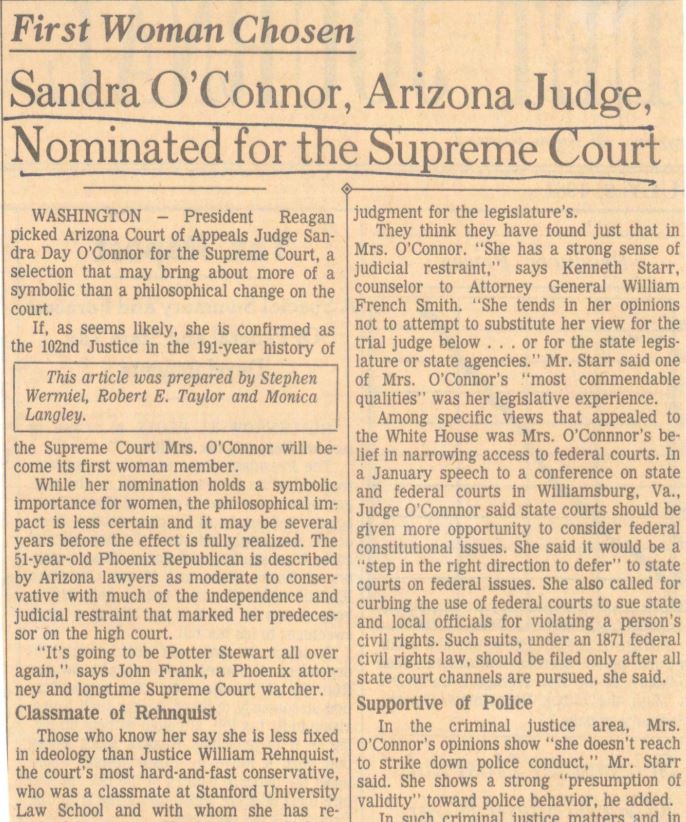Court Nominee learned self-reliance early in life
For Sandra O’Connor, the U.S. supreme Court Justice-designate born in El Paso and raised on the family ranch ‘straddling the Arizona-New Mexico border, success was part of life that was “just supposed to be,” according to a Houston cousin who shared her childhood.
Born Sandra Day, the girl drove a tractor when she was 10, rode a horse and helped round up the cattle on the Lazy B, her family’s ranch northwest of El Paso and south of Duncan, Ariz., her relatives said. In winters, she attended school In El Paso.
“WE WERE CONSIDERED people. We were not considered little girls who can’t do anything. We played dolls, but were were certainly good with screwdrivers, nails and roundups too,” said Flournoy D. Manzo, who in childhood was always, seemingly, at the side of her year-younger first cousin.
Manzo, now a University of Houston administrator, and Evelyn Wooten, Manzo’s mother and O’Connor’s aunt, Tuesday afternoon were enjoying the thrill of a close relative becoming an historic figure and sharing their joy by opening up the family album. Out spilled photos of two young girls enjoying themselves on a beach, in family and school groups and with horses. Also, out came the O’Connor family holiday cards. One shows her and husband John, an attorney, backpacking.
A 1974 CARD HAS the O’Connors, included the three sons, pictured with powdered wigs and sitting on the “O’Connor Supreme Court.” Sandra O’Connor is listed as “co-chief justice, junior grade,” and her election to the Superior





